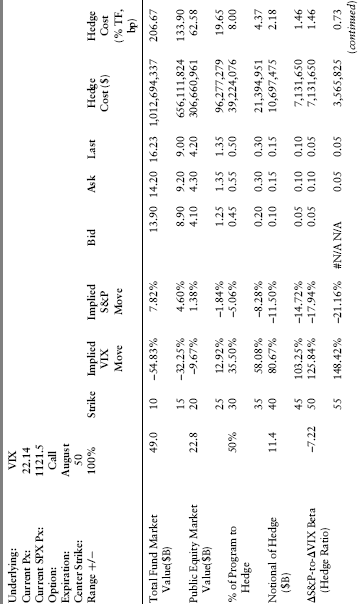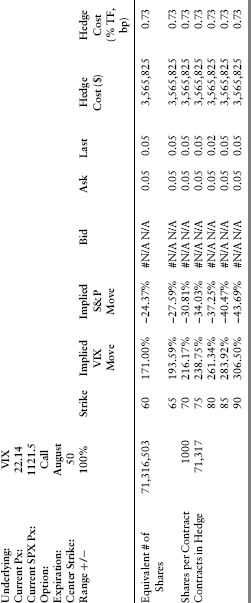VIX Calls
A related hedging product is a call option on the VIX itself. Table 18.2 is the VIX counterpart to Table 18.1's S&P 500 put. Here, we see that on August 3, 2010, the current VIX was at 22.14. We choose to center our strikes at 50 and use the same market value of the fund ($49 billion) with public equity component equal to $22.8 billion, of which we wish to hedge 50 percent, or $11.4 billion, which becomes the notional amount for the hedge.
Table 18.2 August 3, 2010, VIX Calls.


Let's take the VIX one-month contract with strike 50. If the VIX exceeds 50, the call option would be exercised and the payoff would be the difference between the spot VIX and the strike value times the notional. This is a 125.84 percent increase in volatility from the August 3 level. For convenience, column three includes the implied S&P 500 move. For example, a 18 percent decline in the S&P 500 index is consistent with the 125.84 percent increase in implied volatility. Notice that strikes above 50 have no bids, suggesting that the market places no significant likelihood on volatility risk to these levels (notice that the implied S&P move is about where we'd be in our tail risk hedge example). The asking price, however, is very, very cheap at these elevated VIX levels. As we move into lower volatility ...
Get Investment Theory and Risk Management, + Website now with the O’Reilly learning platform.
O’Reilly members experience books, live events, courses curated by job role, and more from O’Reilly and nearly 200 top publishers.

